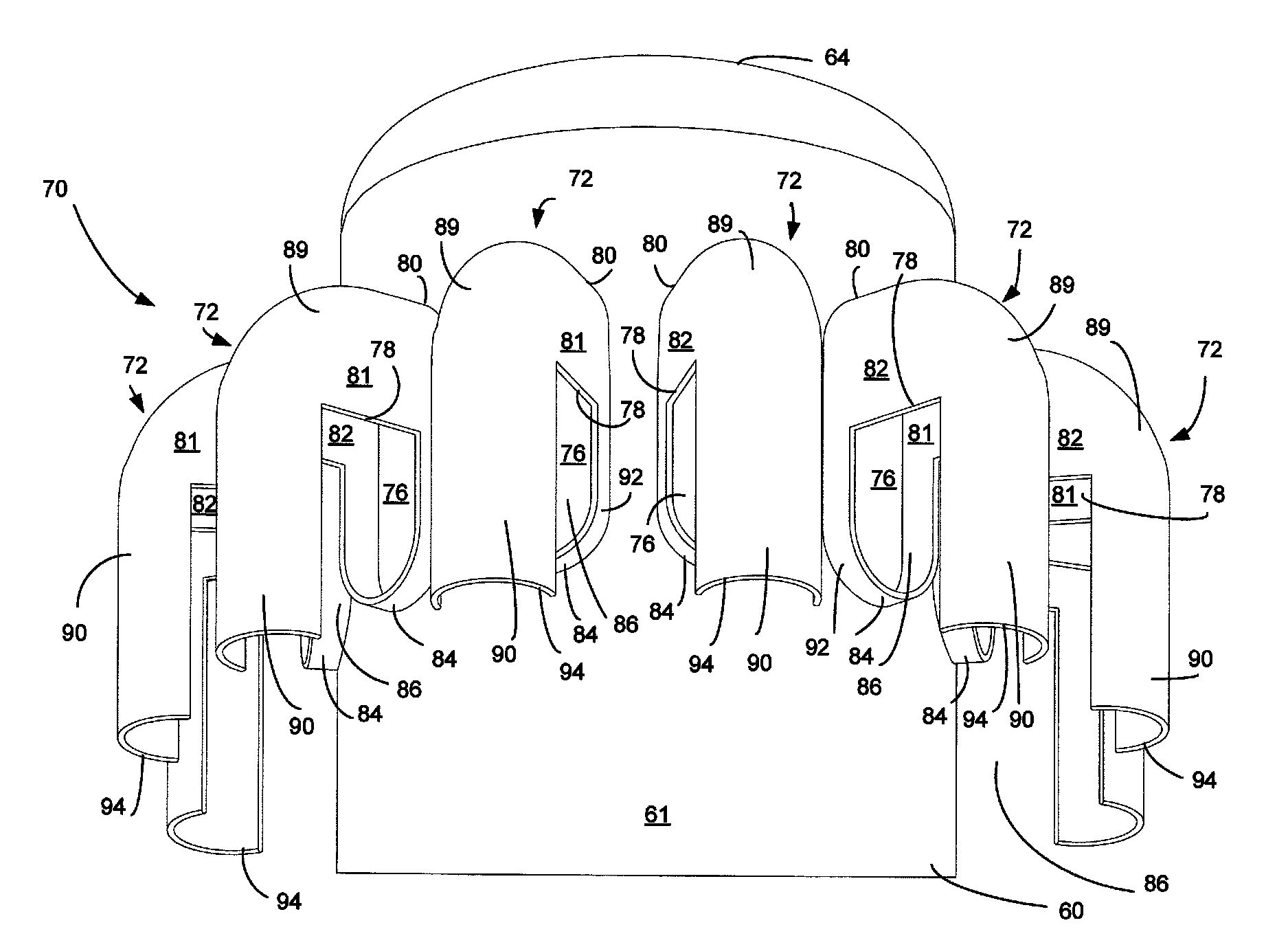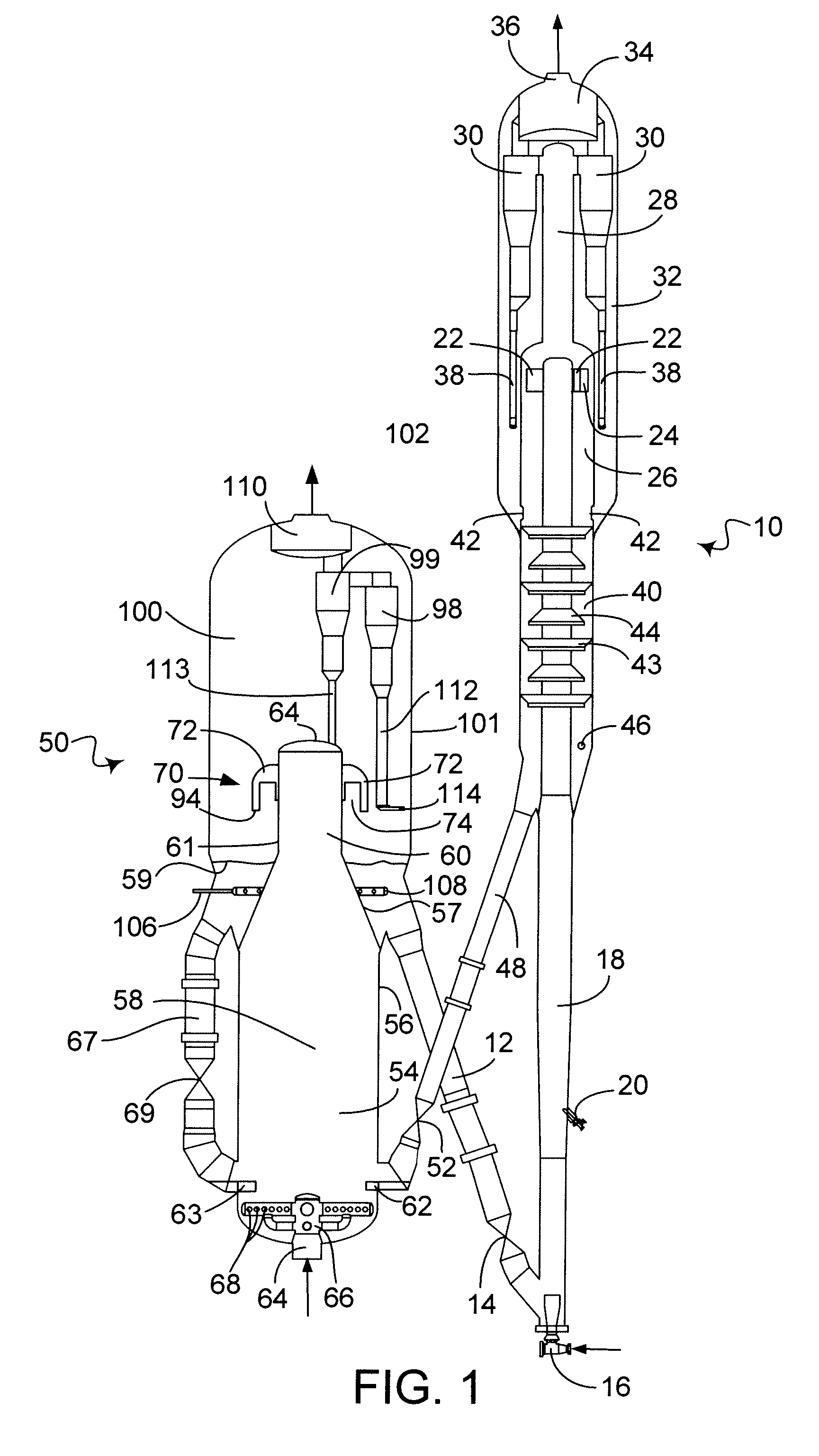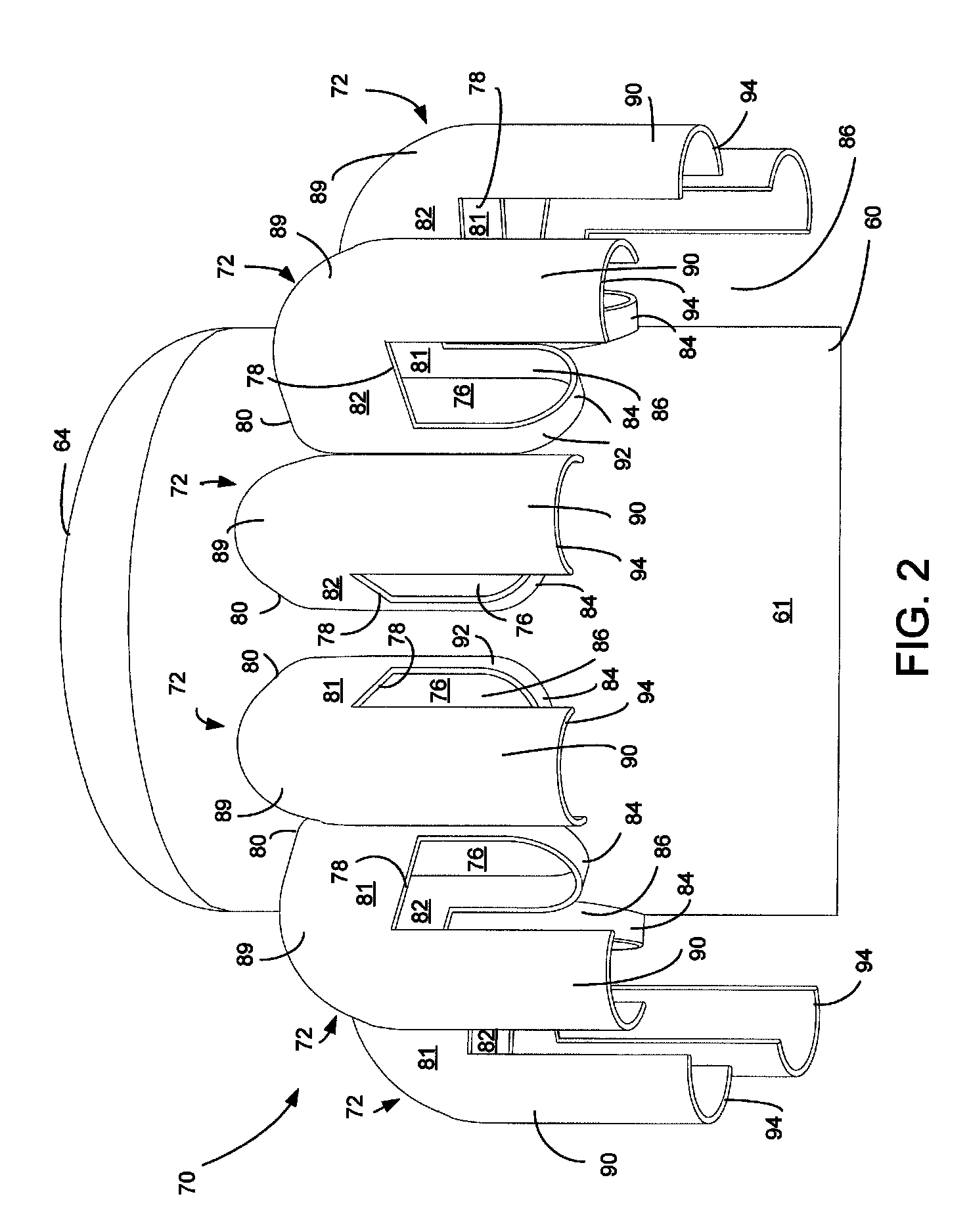Apparatus and process for regenerating catalyst
a technology of apparatus and catalyst, applied in the field of apparatus and process for regenerating catalyst, can solve the problems of reducing separation efficiency, and achieve the effects of increasing throughput, reducing separation efficiency, and increasing disengager discharge velocity
- Summary
- Abstract
- Description
- Claims
- Application Information
AI Technical Summary
Benefits of technology
Problems solved by technology
Method used
Image
Examples
Embodiment Construction
[0017]The process and apparatus of the present invention may be embodied in an FCC unit. FIG. 1 shows an FCC unit that includes a reactor vessel 10 and a regenerator vessel 50. A regenerator standpipe 12 transfers catalyst from the regenerator vessel 50 at a rate regulated by a slide valve 14 to the reactor vessel 10. A fluidization medium such as steam from a nozzle 16 transports catalyst upwardly through a riser 18 at a relatively high density until a plurality of feed injection nozzles 20 (only one is shown) inject feed across the flowing stream of catalyst particles.
[0018]A conventional FCC feedstock or higher boiling hydrocarbon feedstock are suitable feeds. The most common of such conventional feedstocks is a “vacuum gas oil” (VGO), which is typically a hydrocarbon material having a boiling range of from 343 to 552° C. (650 to 1025° F.) prepared by vacuum fractionation of atmospheric residue. Such a fraction is generally low in coke precursors and heavy metal contamination whi...
PUM
| Property | Measurement | Unit |
|---|---|---|
| superficial velocity | aaaaa | aaaaa |
| superficial velocity | aaaaa | aaaaa |
| superficial gas velocity | aaaaa | aaaaa |
Abstract
Description
Claims
Application Information
 Login to View More
Login to View More - R&D
- Intellectual Property
- Life Sciences
- Materials
- Tech Scout
- Unparalleled Data Quality
- Higher Quality Content
- 60% Fewer Hallucinations
Browse by: Latest US Patents, China's latest patents, Technical Efficacy Thesaurus, Application Domain, Technology Topic, Popular Technical Reports.
© 2025 PatSnap. All rights reserved.Legal|Privacy policy|Modern Slavery Act Transparency Statement|Sitemap|About US| Contact US: help@patsnap.com



